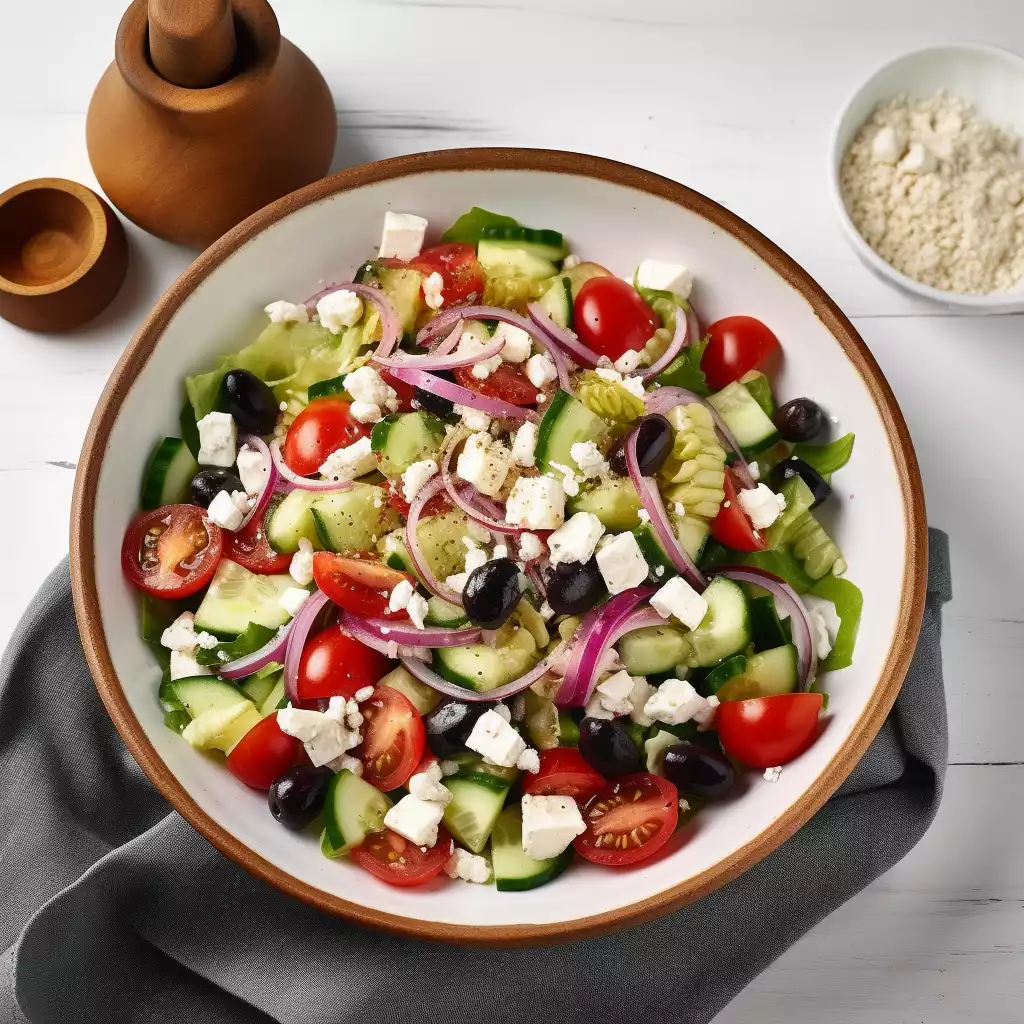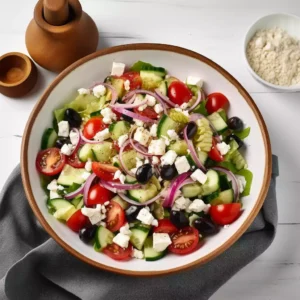
Transport yourself to the sunny shores of Greece with this vibrant and refreshing dish – Greek Salad. Bursting with colors and flavors, this classic Mediterranean recipe is a celebration of fresh ingredients and simple yet tantalizing seasonings.
Originating from Greece, this salad has become a beloved dish worldwide for its combination of crisp vegetables, tangy cheese, and zesty dressing.
Whether you’re a seasoned cook or a kitchen novice, crafting this salad is a breeze, making it perfect for any occasion, from casual lunches to elegant dinner parties.
Expert Tip: Experiment with different types of olives for added variety and depth of flavor.
Cherry Tomatoes: These little bursts of sweetness add juicy freshness to the salad, contrasting beautifully with the savory elements.
Cucumber: Crisp and hydrating, cucumber provides a refreshing crunch, balancing the creamy texture of the feta cheese.
Feta Cheese: A staple in Greek cuisine, feta cheese lends a creamy, tangy flavor that perfectly complements the other ingredients.
Red Onion: Sliced thinly, red onion adds a subtle bite and a pop of color to the salad, enhancing its visual appeal.
Olives: Pitted Kalamata olives contribute a briny, salty flavor, elevating the taste profile of the salad.
Green and Yellow Bell Peppers: Diced bell peppers bring a crunchy texture and sweet, mild flavor, adding depth to the salad.
Oregano: Fresh oregano infuses the salad with aromatic herbaceous notes, enhancing its Mediterranean charm.
Olive Oil: Extra-virgin olive oil forms the base of the dressing, adding richness and a fruity undertone to the salad.
Vinegar: Red wine vinegar provides acidity and a tangy kick, balancing the flavors of the salad.
Salt and Black Pepper: These seasoning staples are essential for enhancing the taste of the ingredients and bringing out their natural flavors.
Expert Tip: Don’t overdress the salad; start with a small amount of dressing and add more as needed to avoid soggy greens.
Expert Tip: For the best flavor, use ripe, seasonal tomatoes and crisp, fresh vegetables.
Yes, you can prepare the salad ingredients in advance and toss them with the dressing just before serving to keep them crisp and fresh.
Absolutely! Feel free to add or substitute ingredients according to your preference. Some common additions include diced avocado, capers, or fresh herbs like parsley or mint.
Greek salad is best enjoyed fresh but will keep in the refrigerator for up to 2 days. Keep it covered to maintain its freshness.
Yes, you can substitute dried oregano for fresh, but use it sparingly as it has a more concentrated flavor. Start with a smaller amount and adjust to taste.
While traditional Greek salad contains feta cheese, you can easily make a vegan version by omitting the cheese or using a plant-based alternative.
Here are some more recipes for you to enjoy! If you my recipes don’t forget to rate and leave a comment.
If you have any recipe suggestions, please do not hesitate to ask me. A great way to stay in contact with me is through Instagram, Facebook, Twitter and YouTube. Don’t forget to tag me @CookwithNabeela in your recipe photos!

Subscribe now to receive my latest recipes directly in your inbox. Stay up-to-date and never miss out!

I love to cook! I want to share with you my favourite, delicious family-friendly recipes. I want to inspire you to create fantastic food for your family every day.
Add your first comment to this post